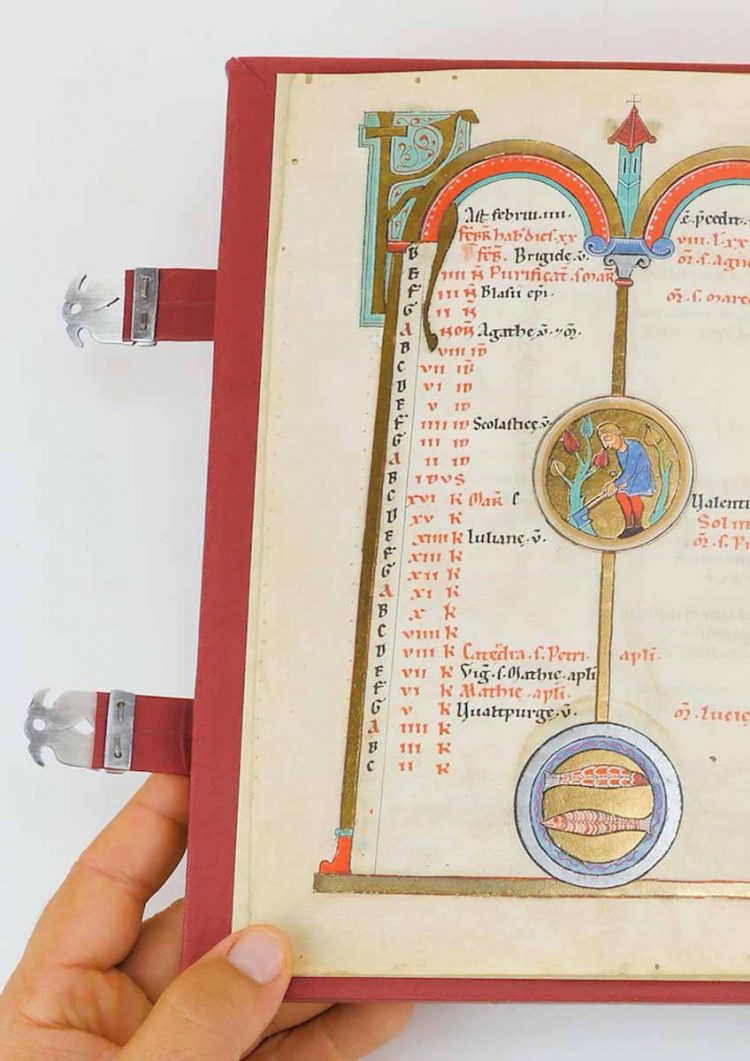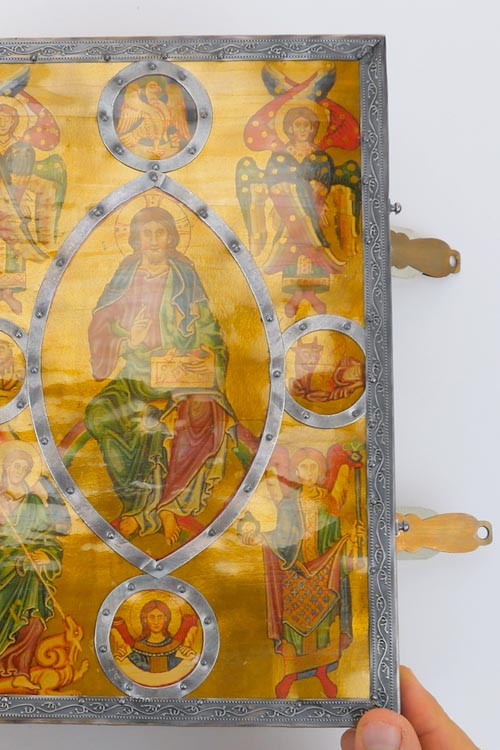Elizabeth Teviotdale used a Facsimile Finder video to teach a graduate seminar at Western Michigan University. The lesson should have taken place in the Special Collections library, but was transferred online due to the health emergency. This is the account of her experience.

Just as my graduate seminar on codicology and Latin paleography was moving into the part of the semester that would feature lots of hands-on activities involving Special Collections materials—manuscripts, manuscript leaves, and manuscript facsimiles—, the COVID-19 pandemic pushed the course into a distance education format.
Of course, nowadays there is a robust presence of medieval manuscript material available as digital surrogates on the internet. Interacting with those digital surrogates, however, fails to convey much of what beginning students of codicology and paleography desperately need in order later in their careers to interpret those very surrogates with confidence.
With limited experience of manuscripts in the flesh, it is difficult for students to envision scale and the manuscript context when viewing individual pages online, even when the photography is—as it often is—of high quality. When Facsimile Finder offered to make videos in aid of teaching during the pandemic, I leapt at the opportunity, and Facsimile Finder created a video especially for my class.
For our unit on the medieval liturgical calendar, the students were introduced to the subject through the J. Paul Getty Museum’s excellent video and a document I prepared for them on a single calendar page, explaining all of the elements of the text (with translations) and decoration.
How I Built an Assignment for Students Based on a Facsimile Video
“View the video on thirteenth-century calendars by Facsimile Finder (at full screen on the largest screen to which you have access). Each student is to start a discussion thread by citing a frame (by minute and second) of the video and posing a question about something you see there.
It can be about anything: an aspect of the decoration, an aspect of mise-en-page, or what a particular text says or how it functions (required). If you are so inclined, you can address a classmate’s question (optional).
The instructor will address all questions posed, and you are expected to check back at some time later in the semester to see how it all turned out for your question.
And, to answer an obvious question: those are the hands of Giovanni Scorcioni, the owner of Facsimile Finder, who kindly made the video especially for our class.”
In the video, three facsimiles were shown, first the Bamberg Psalter, then the Breslau Psalter, and finally the Hainricus Missal. As each facsimile was introduced, we saw first the front cover and then a selection of the calendar pages.
The presence of Giovanni’s hands conveyed scale, and the action of his turning the pages showed the calendars’ positions within the codices. By design, the video zoomed in from time to time and paused on a page to facilitate more sustained consideration.
There seemed to be something for everyone, and the students raised questions for all three calendars. I envisioned this a stump-the-instructor exercise, and my students certainly put me through my paces.
Students’ Questions Triggered Research Into Medieval Calendars
Here is a sample of what came up in the course of the day’s exercise: one student noticed that there seemed to be only one text in the calendar of the Bamberg Psalter written in black, which turned out to be a notation on the line for June 5 that a certain Gebhard von Hirschberg had been murdered in his sleep.
This provided an opportunity to inform my students about the sorts of texts that might be added to medieval calendars and their evidential value for establishing origin and provenance.
Another student asked how one could determine the month by the decoration alone and without recourse to the text in the Breslau Psalter, where the months are not named. This occasioned a consideration of the degrees of fixity in the iconography of the zodiacal signs and the labors of the months in medieval calendars.
Yet another student was puzzled by the page following the December page in the Hainricus Missal, which has a painted architectural framework but no text.
And I fielded a whole series of questions about the front cover of the Bamberg Psalter, which features paintings on parchment under translucent sheets of horn. The transitional page in the Hainricus Missal and the binding of the Bamberg Psalter never would have come into view had I created an assignment from still images alone.
One Video, Many Lessons Learned
With the video format, not only did the students have a more tactile, if only virtual, experience of the medieval calendar, but they also became attuned to the manuscript contexts for the calendars that we studied.
Distance learning may have prevented my students from touching medieval manuscripts, but the Facsimile Finder video helped to bridge the gap between my students and the material culture of the Middle Ages.



